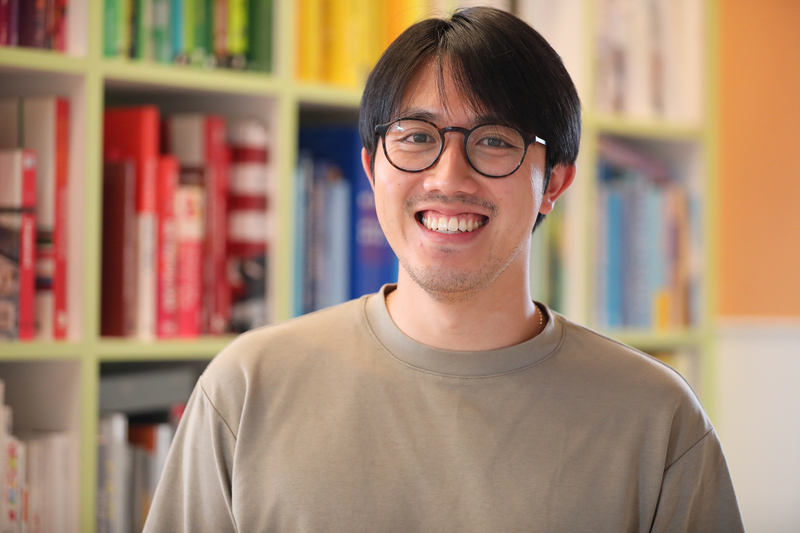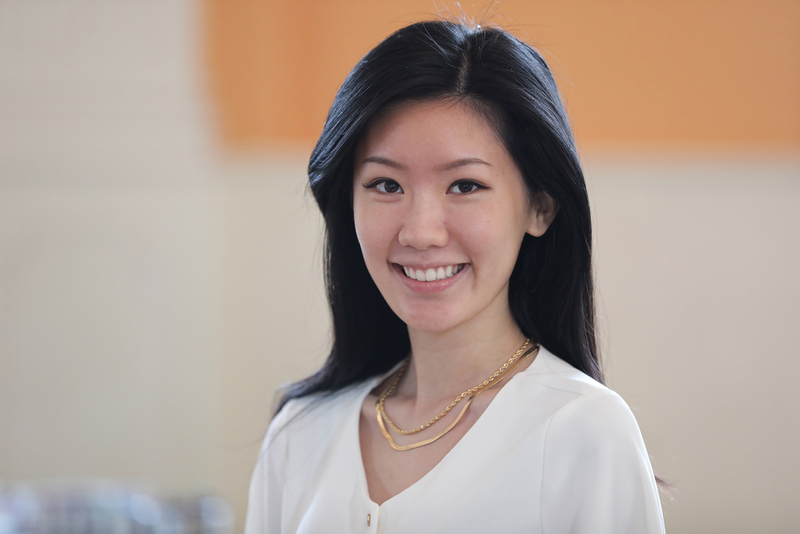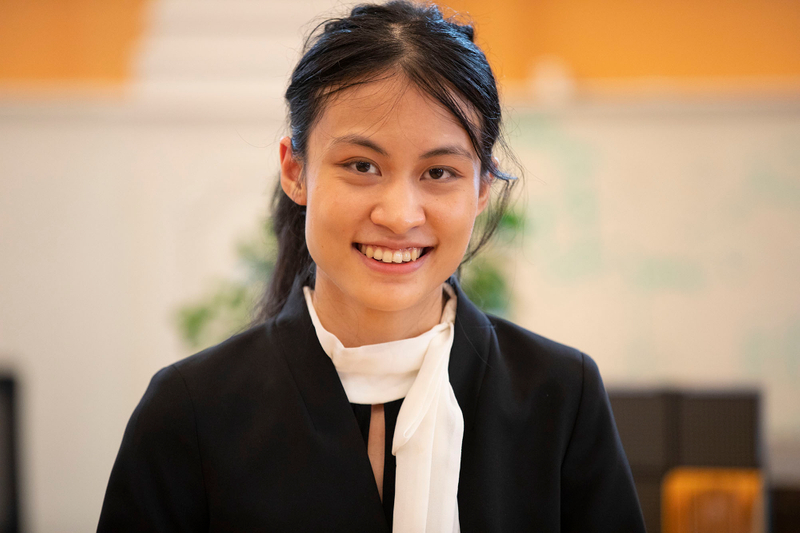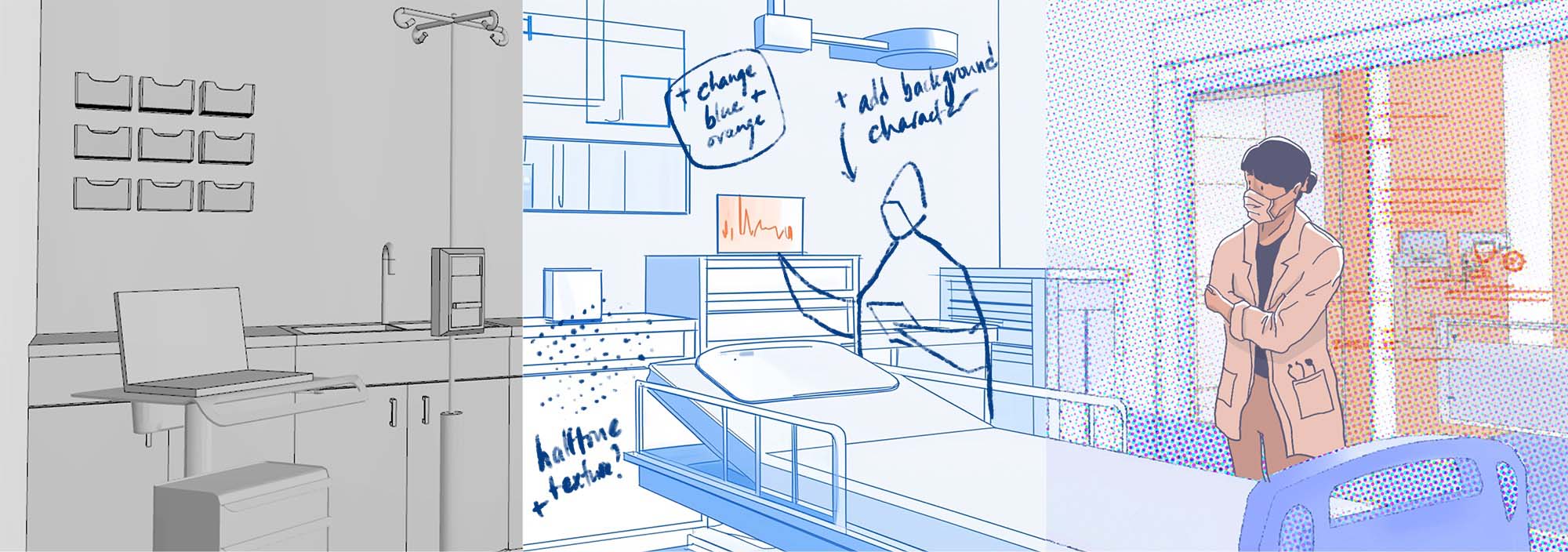
Reimagining Visual Storytelling with GenAI
Visual storytelling is at the heart of how we share ideas at GoInvo, but creating visuals by hand is slow and demanding. This led us to ask: How might GenAI help us move faster and communicate more ambitious ideas?
Our process starts with research and interviews, followed by rounds of brainstorming, sketching, and vector refinement. Whether it’s static posters, animations, or software, visual elements can take days to develop, and small changes can require redrawing scenes from scratch. This slows iteration, limits experimentation, and restricts the scale and complexity of what we can achieve on tight timelines.
This is where our 3D and GenAI-assisted workflow comes in.
A Faster, Smarter Workflow.
We’re developing a digital library of 3D environments including hospitals, clinics, and care homes to use as virtual sandboxes. Using Rhinoceros 3D, a modeling software, we can freely explore different compositions in these virtual environments and endlessly capture varying perspectives to apply in our work.
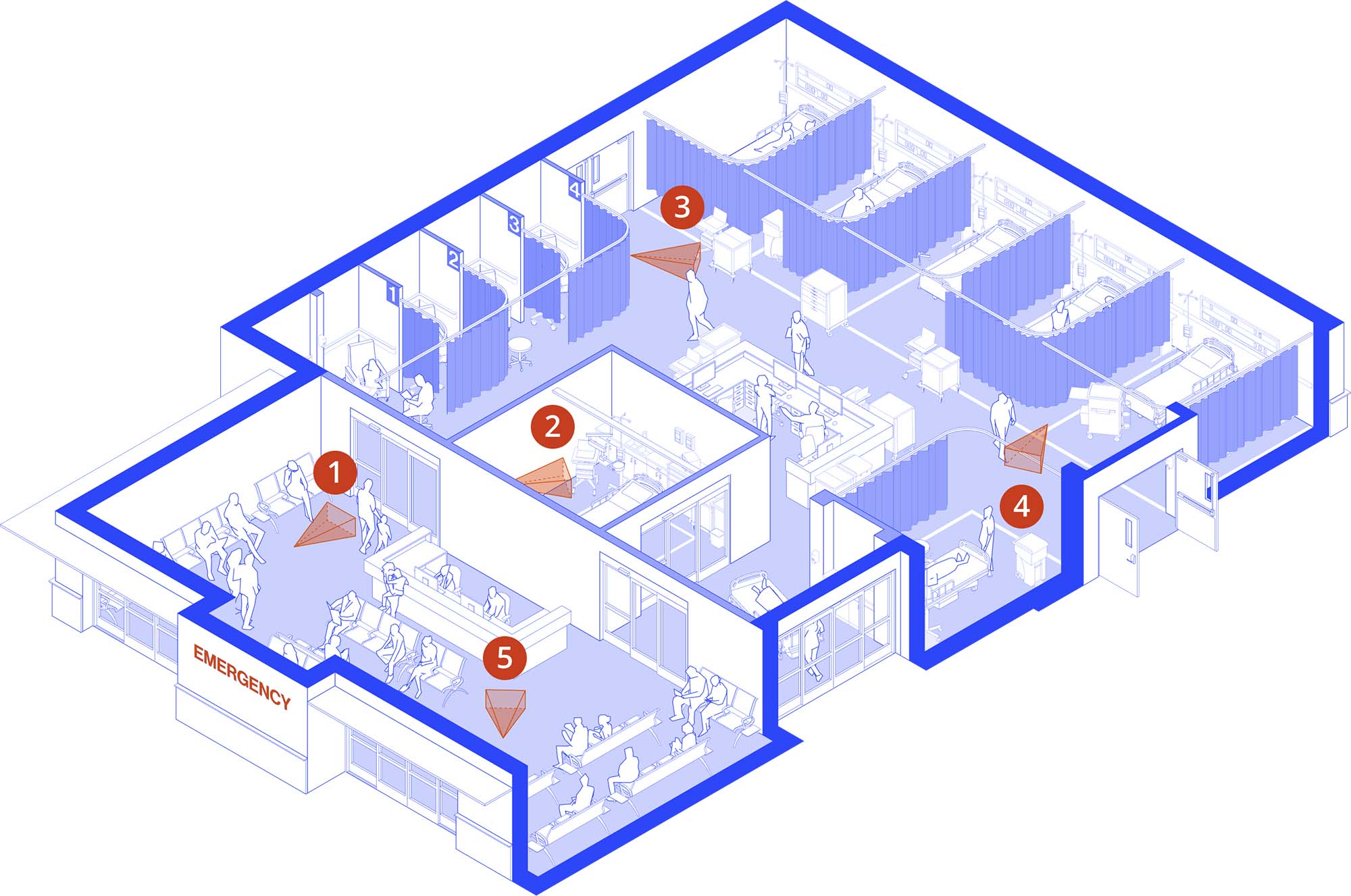
Model images are then styled using GenAI tools like Midjourney and are guided by prompts tailored to each project’s visual direction. What once took days to illustrate can now be completed in a matter of hours. Scene changes and revisions take a quick camera pivot in the model and an entirely new scene is generated.
The time investment thus shifts from redrawing each scene by hand to a one-time effort of constructing a detailed 3D model. Once built, these virtual environments become reusable and flexible assets that can support new stories and future projects.
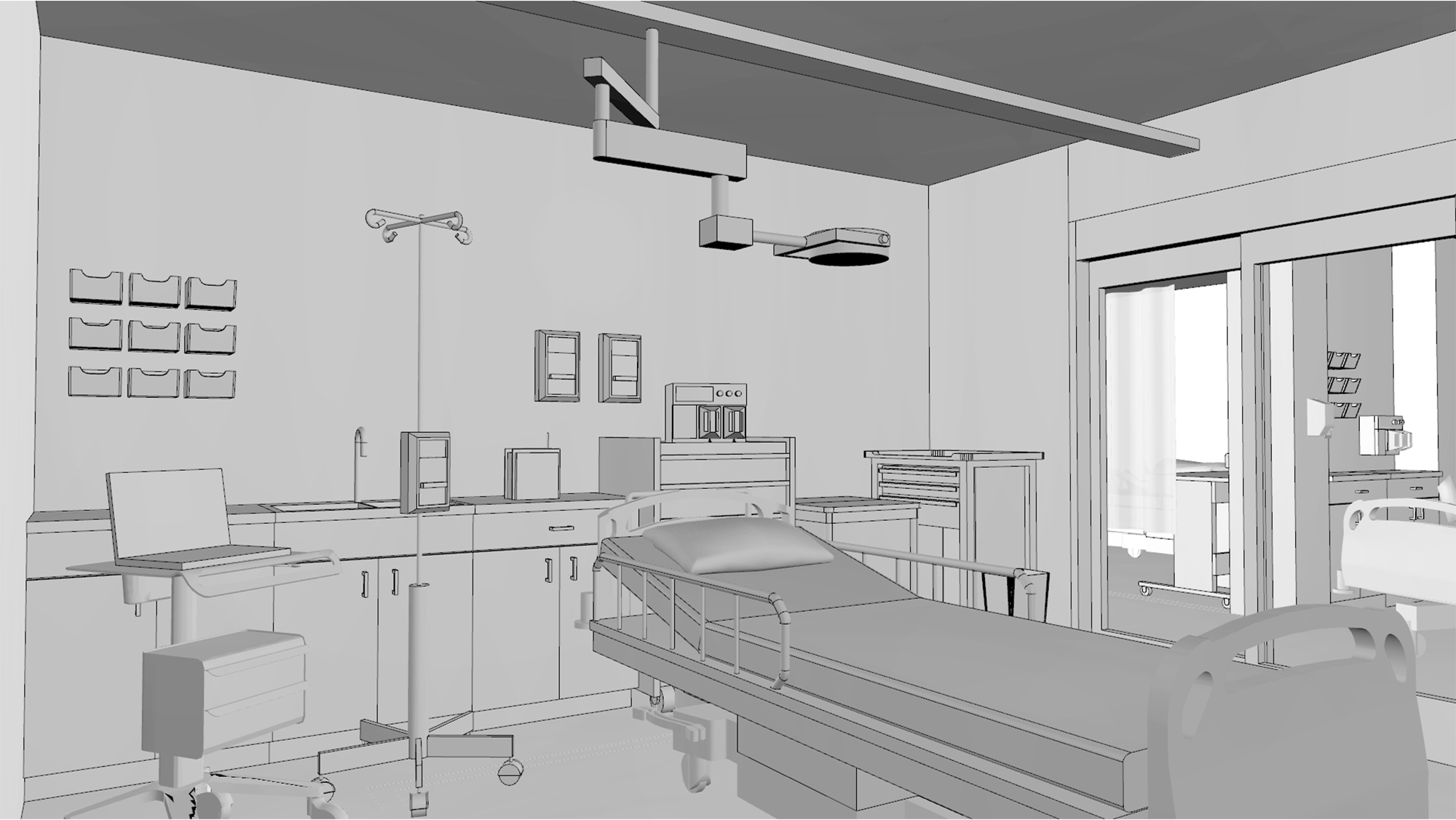
1. Hospital trauma room render captured in Rhinoceros 3D model.
2. Hospital trauma room render stylized in Midjourney with accompanying prompt.

3. Final image post-processing completed in Photoshop with additional characters added in Procreate.
4. Animation created with Midjourney Video using the final post-processed image as the starting frame.
GenAI motivates creative experimentation.
This workflow doesn’t just save us time, it also unlocks new creative possibilities that might have been previously out of reach. GenAI tools like Midjourney allow us to explore a wide range of visual styles such as surrealist, graphic novel-inspired, or painterly, and rapidly iterate our ideas in real-time. Where ideas were once narrowed by a project’s timeline or the limits of what we could achieve by hand, GenAI allows our ideas to expand in scale and ambition, no longer limited by traditional methods.
The examples below offer a small taste of the vastly different outputs GenAI can generate with various prompts.
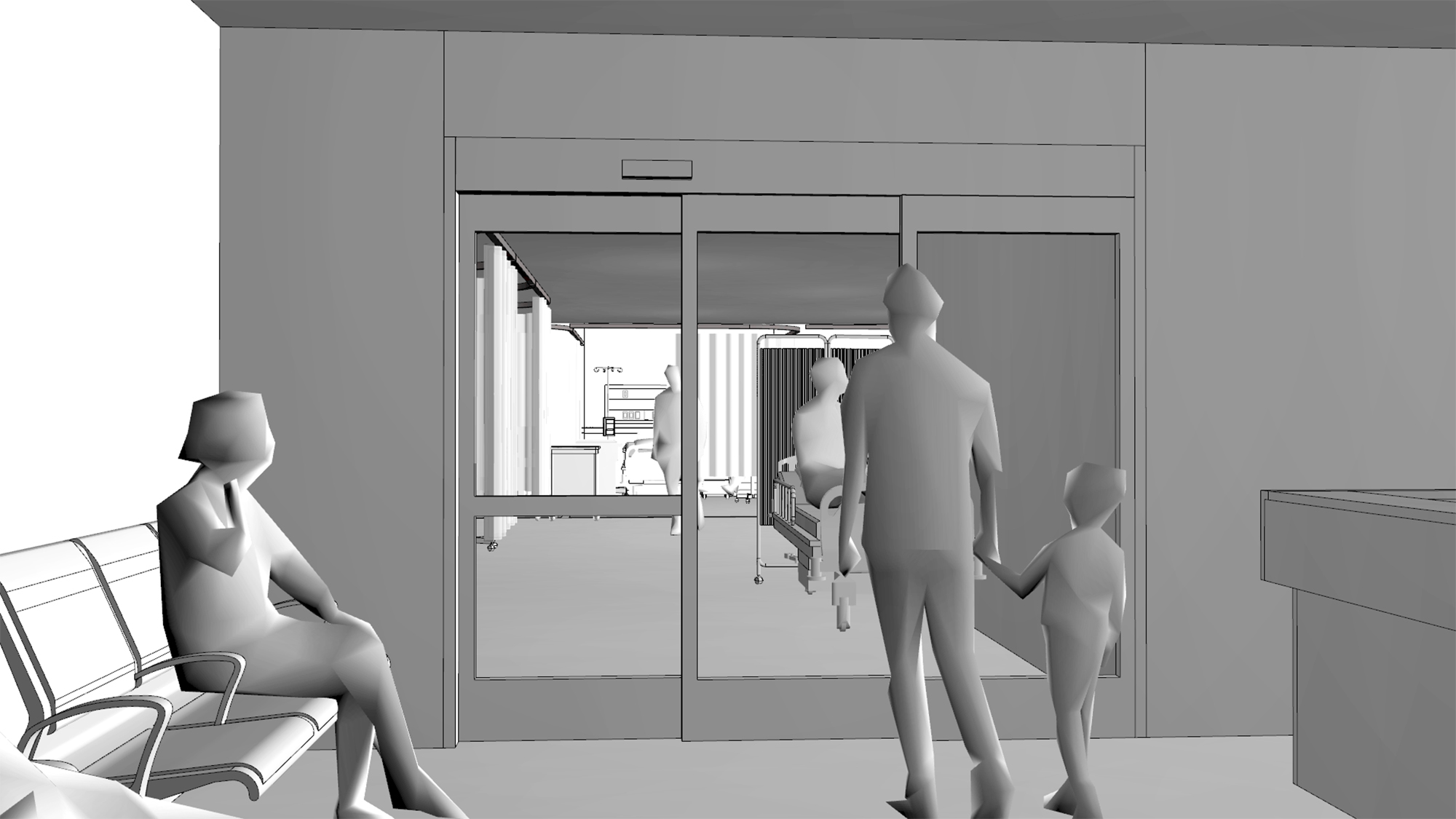
“Emergency waiting room, flat minimalistic, geometric shapes, pastel colors, brush pen, inspired by the visual style of Atey Ghailan.”
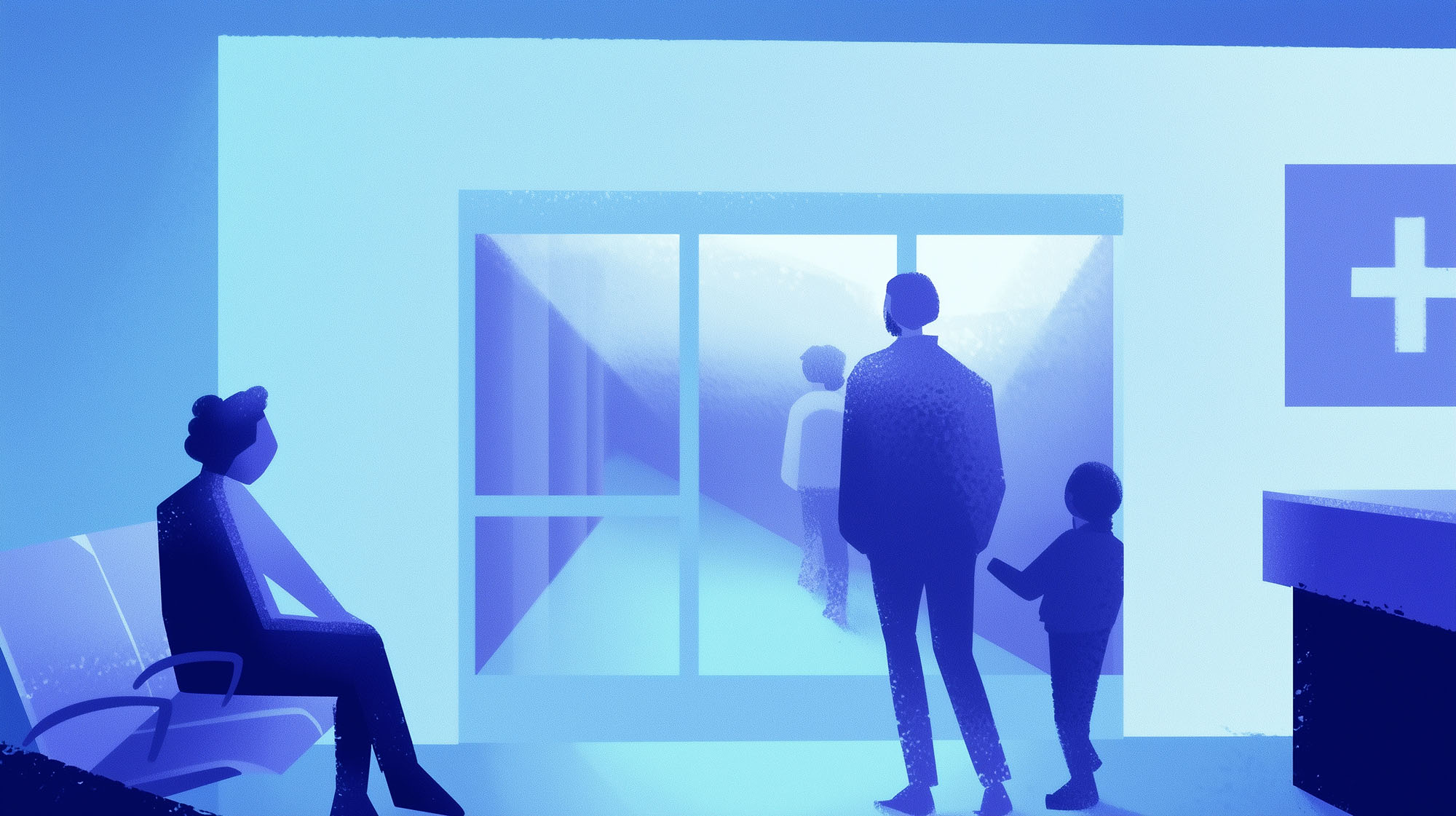

“Hospital trauma room, cinematic lighting, hard-edged blocky brush strokes, rich color gradients with purples, oranges, and greens, high contrast, simplified forms with painterly texture, a moody yet vibrant atmosphere, inspired by the visual style of Joseph Iovescu.”
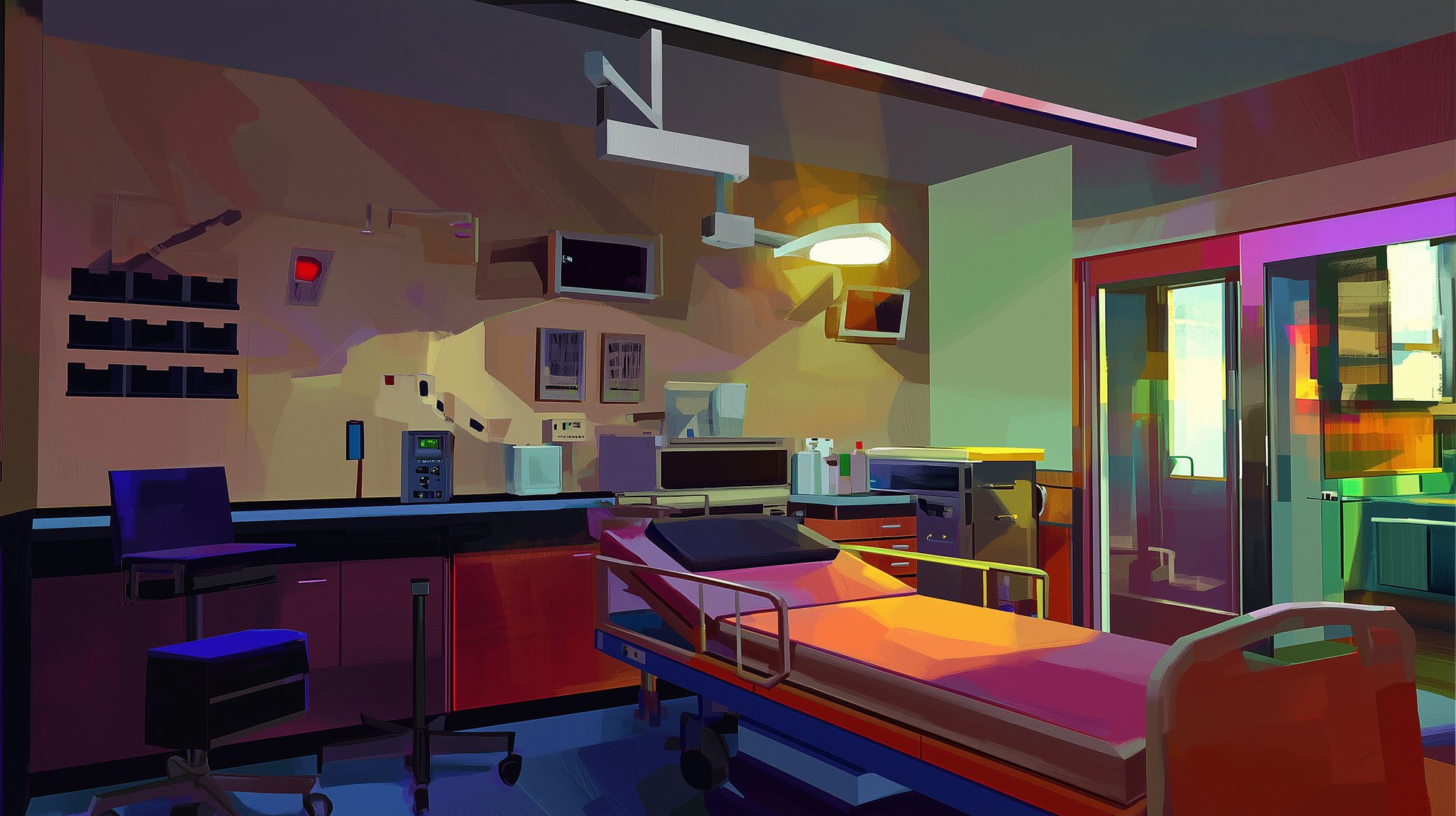
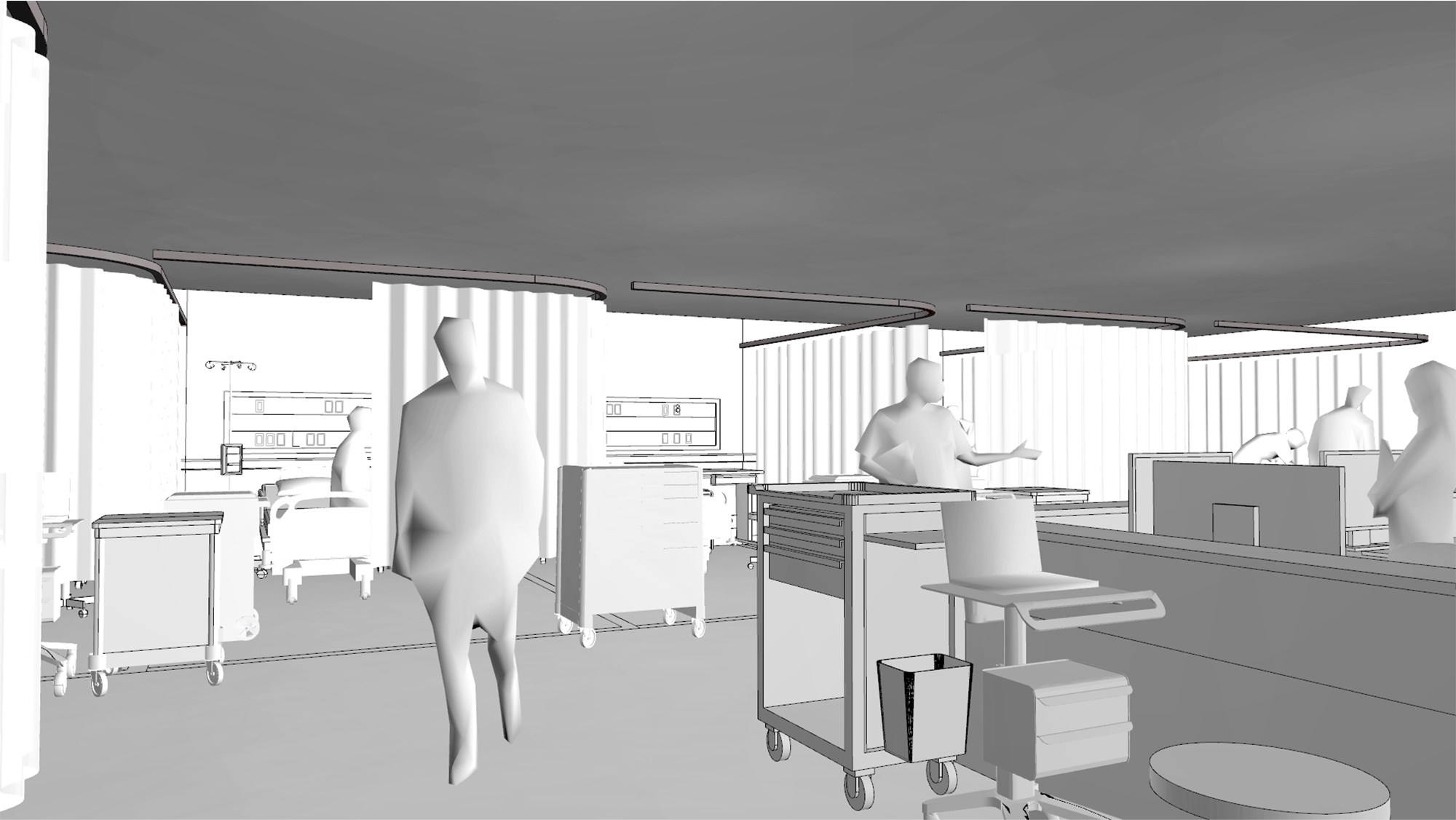
“A high-contrast ink illustration of a hospital emergency room with multiple characters - healthcare providers and patients, expressive black ink lines, minimalist background, bold negative space, inspired by the visual style of Manuel Bortoletti.”

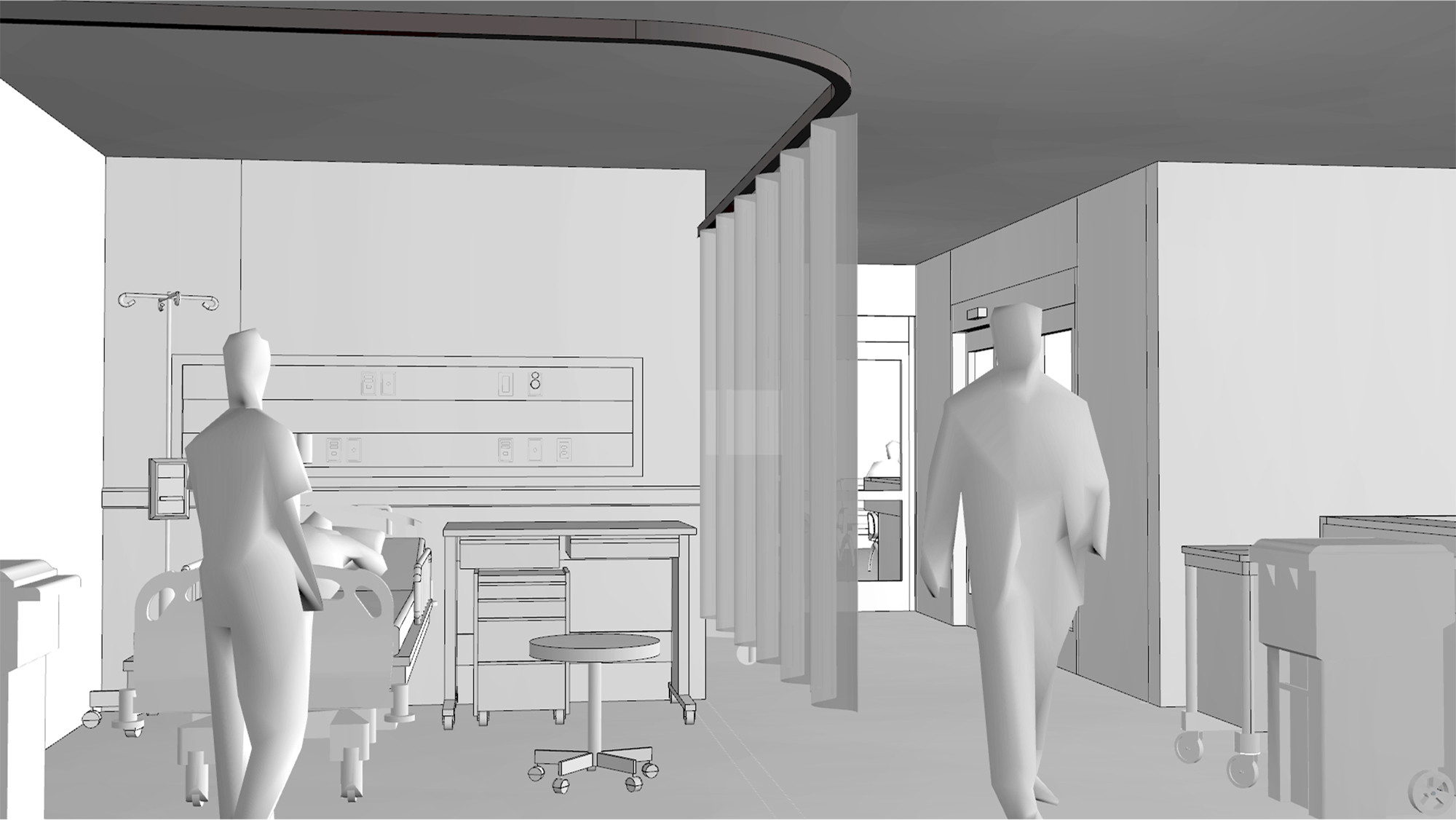
“A minimalistic, surreal illustration of a hospital emergency room, clean thin linework, soft pastel color palette, flat texture, fine detail, elegant negative space, inspired by the visual style of Harriet Lee-Merrion.”
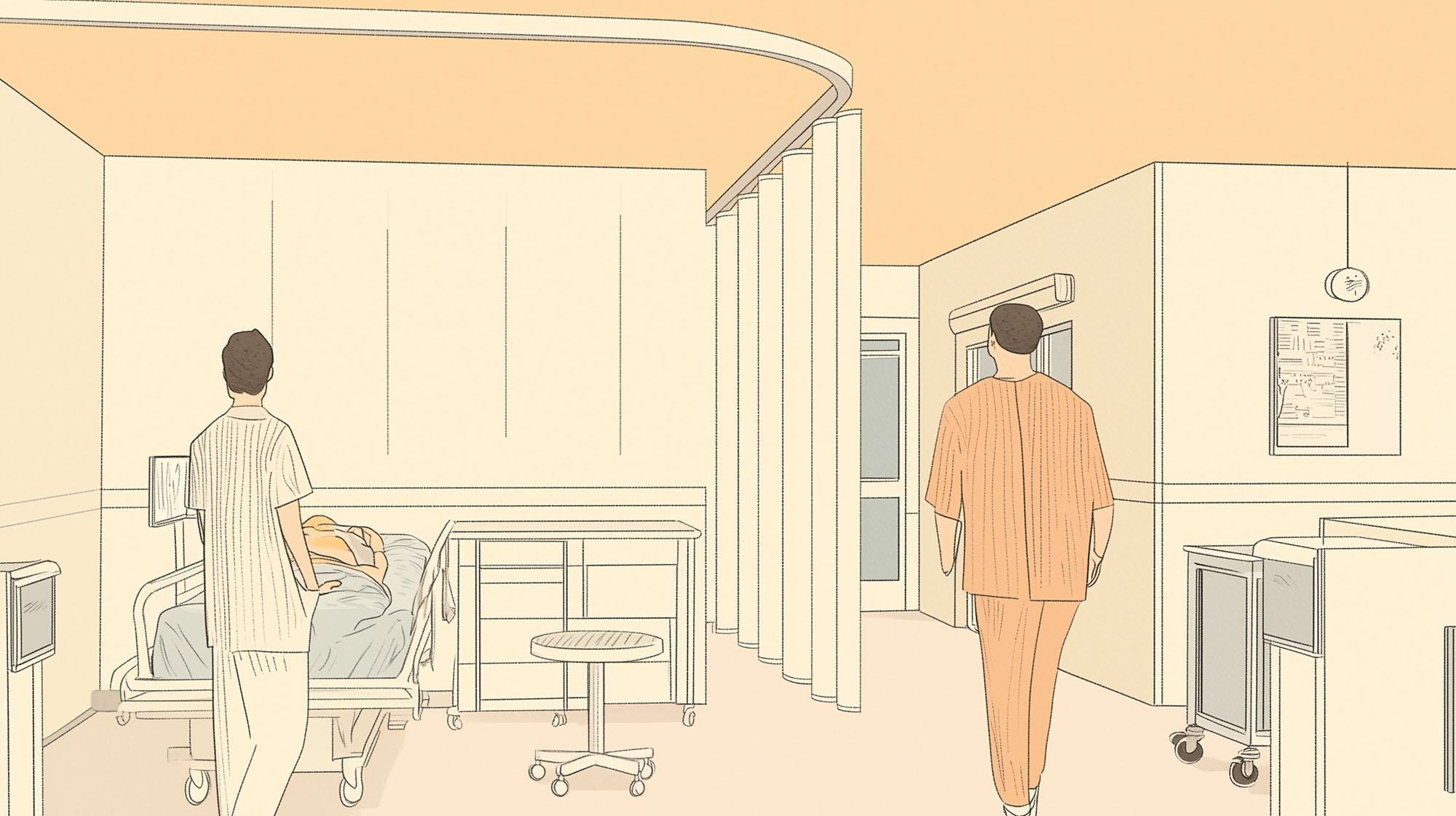
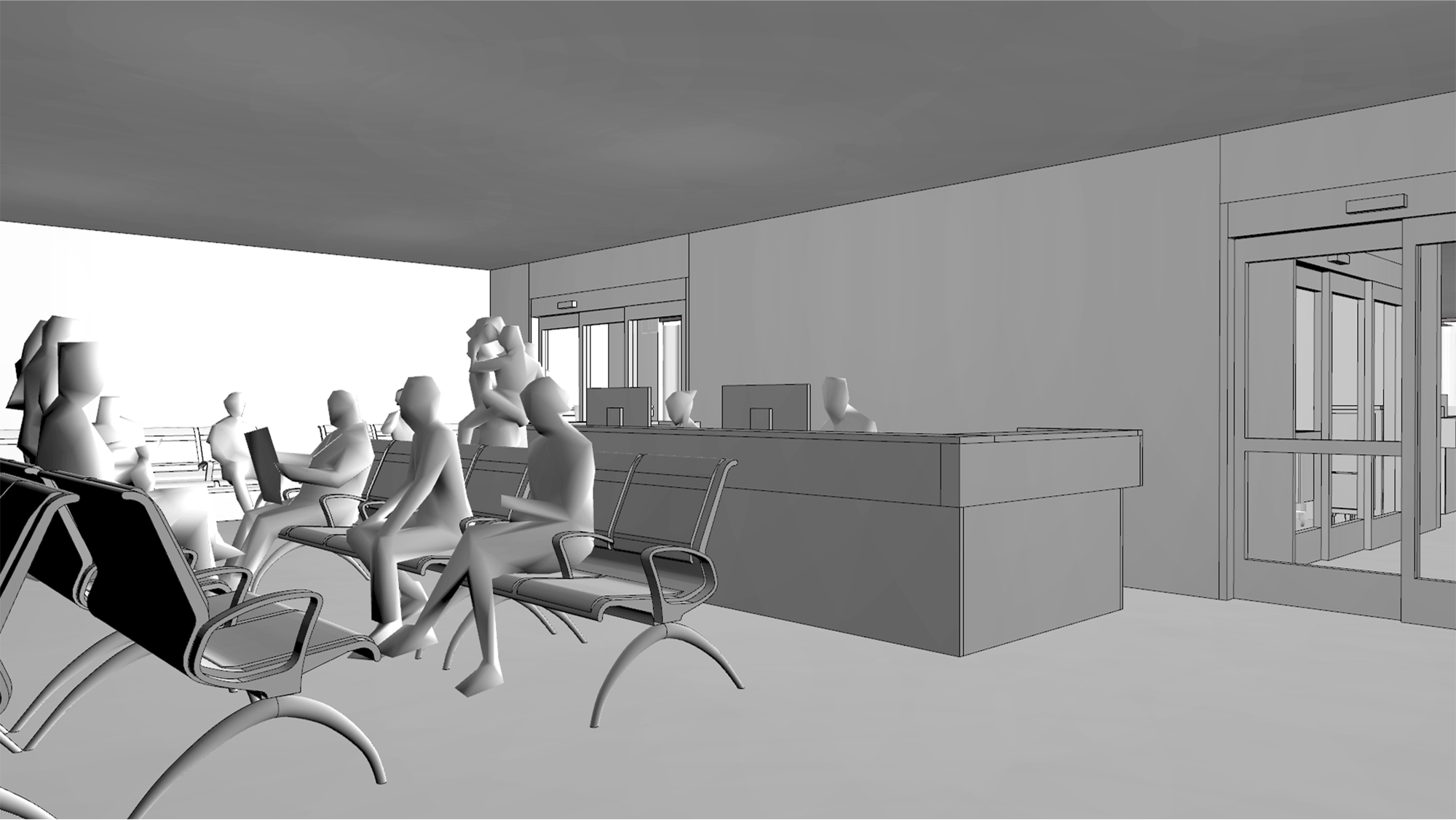
“A friendly and colour hospital waiting room, watercolor textures, playful and minimal detail, inspired by the visual style of Oliver Jeffers.”
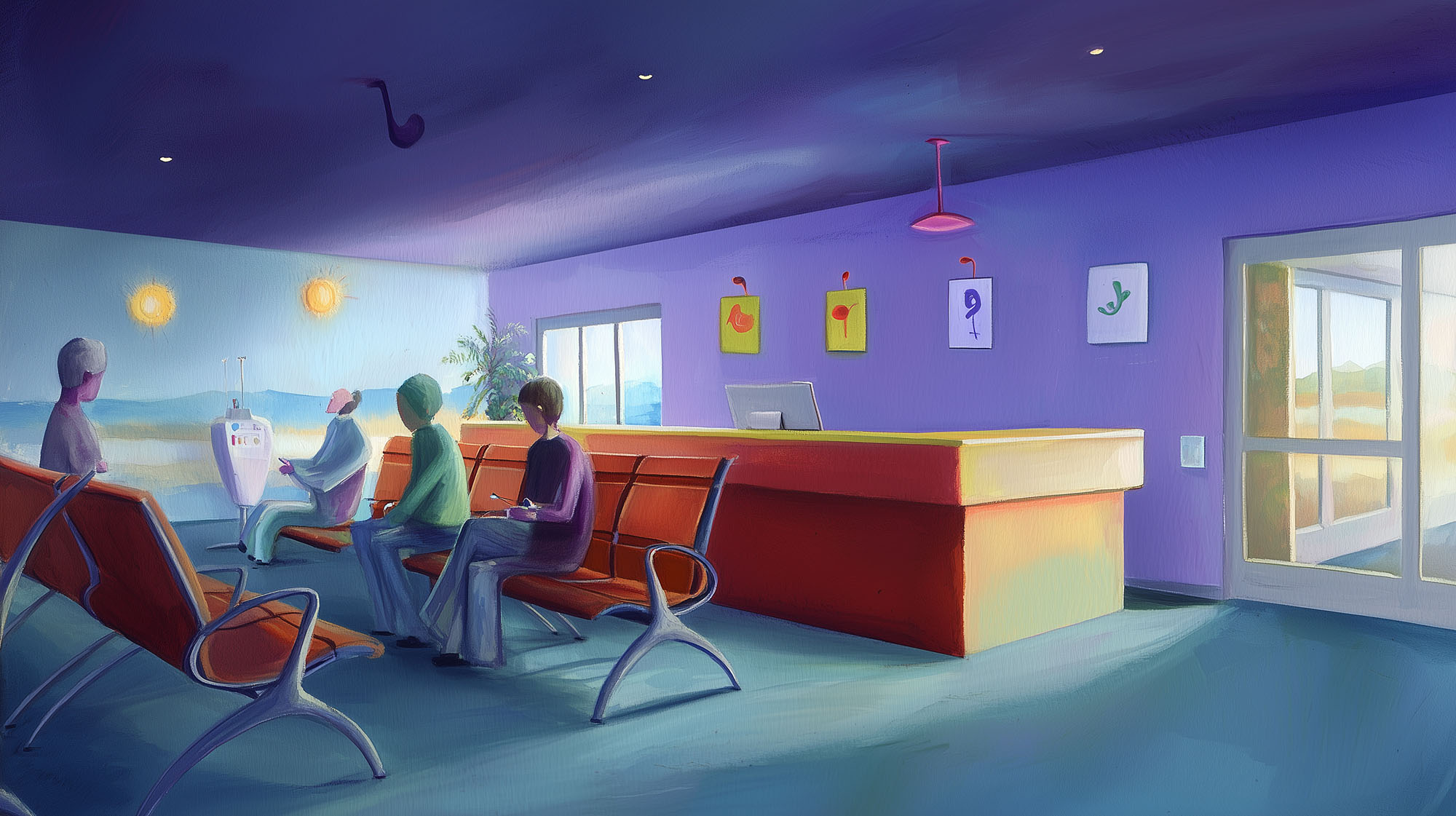
Why does this matter?
This workflow is designed for storytelling at scale. For complex systems and stories, we need hundreds of custom visuals. GenAI allows us to move faster and empowers us to lead with ideas rather than limit them. It helps us sketch crazy ideas, try wild graphics, and show real stories without getting stuck in every pixel and every tool. As research has shown, the more ideas we generate, the more statistically likely we are to come up with a promising lead.
By adding GenAi to our creative workflow, the concept takes the lead, not the toolset — allowing us to bring bold ideas to life and more prototypes to the table. The more we can make and the less time it takes to do so, the better the ideas we can bring to the work.

